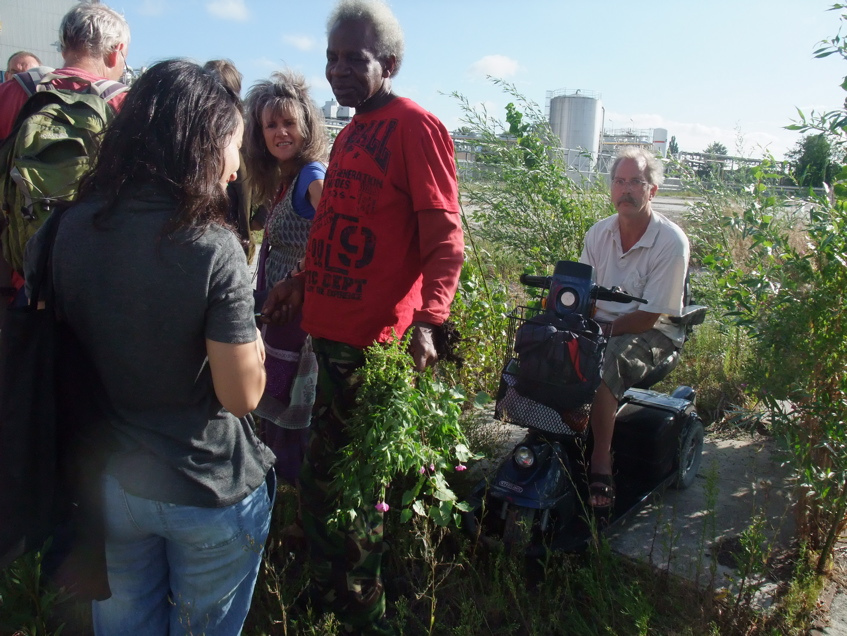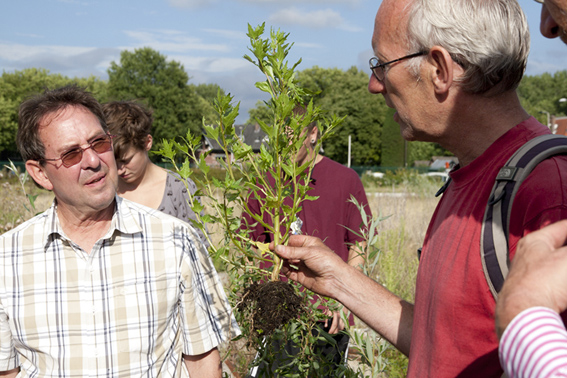Fertile City
De Vruchtbare Stad / Fertile City
Saturday 21 August, Calvé terrein — former peanutbutter factory — Wateringseweg 4, Delft
An expedition to pin point pioneer plants
FoAM lab Amsterdam (Cocky Eek and Theun Karelse) tested their new mobile phone food foraging application, Boskoi on an expedition to explore pioneer plants that thrive on the ruins of demolished buildings on the razed Calvé industrial terrain in Delft. This mapping expedition took place as part of Fertile City. Together with Geert van Poelgeest from the KNNV (Dutch field biology association) and urban botanist Claud Biemans (Frontlinie) and a group of 50 curious and plant hungry Delft residents, FoAM mapped the fertile growth of pioneer plants that pop up along the ruins of demolished architectural sites. These pioneer plants are also known as ruderals (any vegetation that is growing on waste heaps, vacant lots, and abandoned or decaying buildings).
Some of the plants can be botanical anomalies, while many are very common yet also edible weeds that flourish where humans have been. Among the many useful species found were different types of Goosefoot varieties (Chenopodium sp.), Sow thistle varieties (Sonchus sp.), St John’s wort (Hypericum perforatum), Sorrel (Rumex acetosa), edible garden snails namely the Cornu aspersum, and of course the notorious Louisiana crayfish (Procambarus clarkii).
The inventory made during this event overlaps with and expands the knowledge about urban comestibles which has been developed in joint projects between urbanibalism and FoAM lab such as Urban Sanatorium Supper, Heilige Bonen, Fort Beleg, and Urban Edibles.
For the Boskoi application, Urbanibalism is contributing to urban edible finds across cities in Europe. Boskoi (http://www.boskoi.org)which will be released in a few weeks from now.
Fertile City was part of the Anarchitecture art project that responds and challenges the urban regeneration of the railway area in Delft. The construction of a new railway tunnel has left a wide gaping space. Anarchitecture wants to use this space to arouse discussion about urban planning, the edible city and DIY architecture. More about Anarchitecture [in Dutch].

